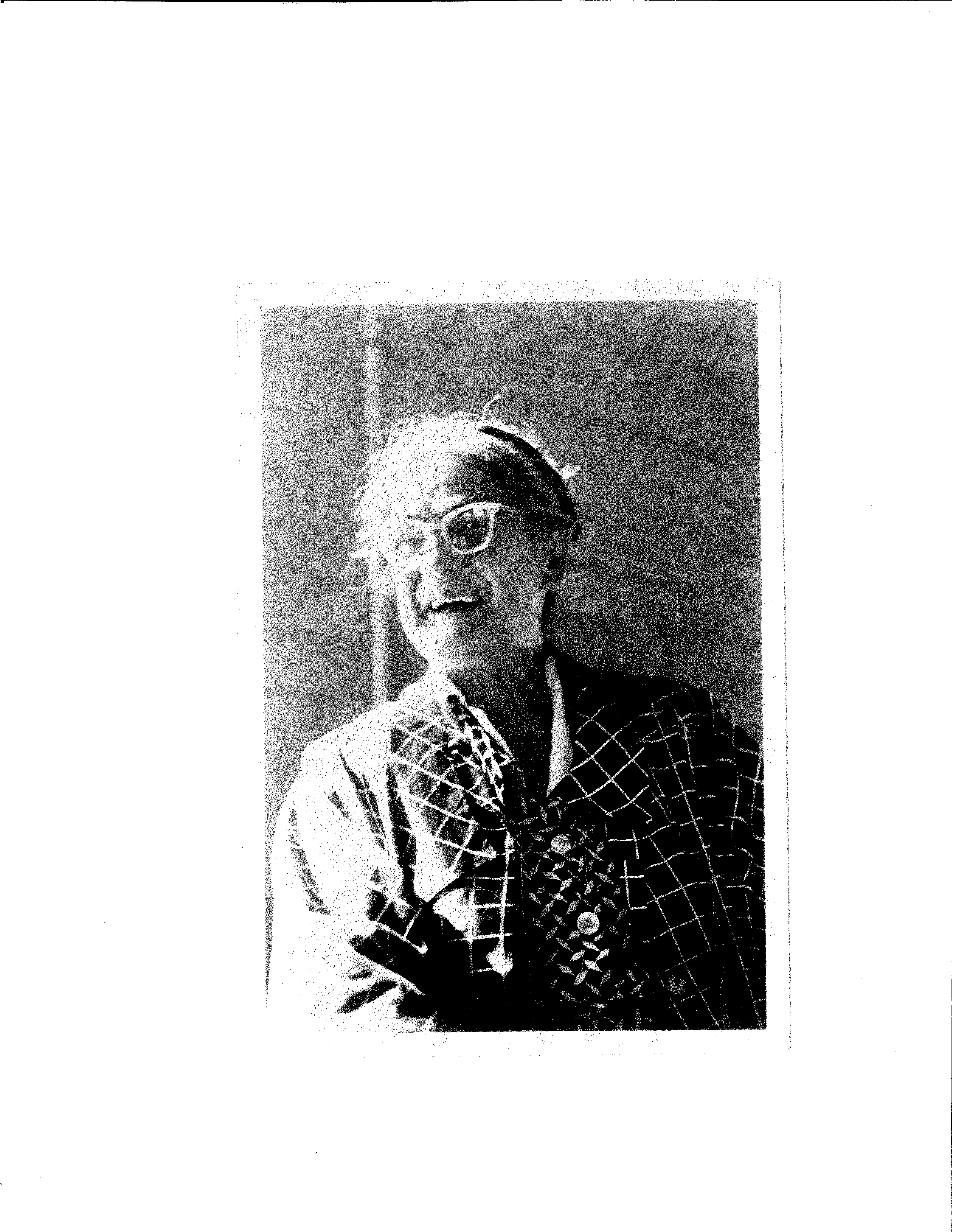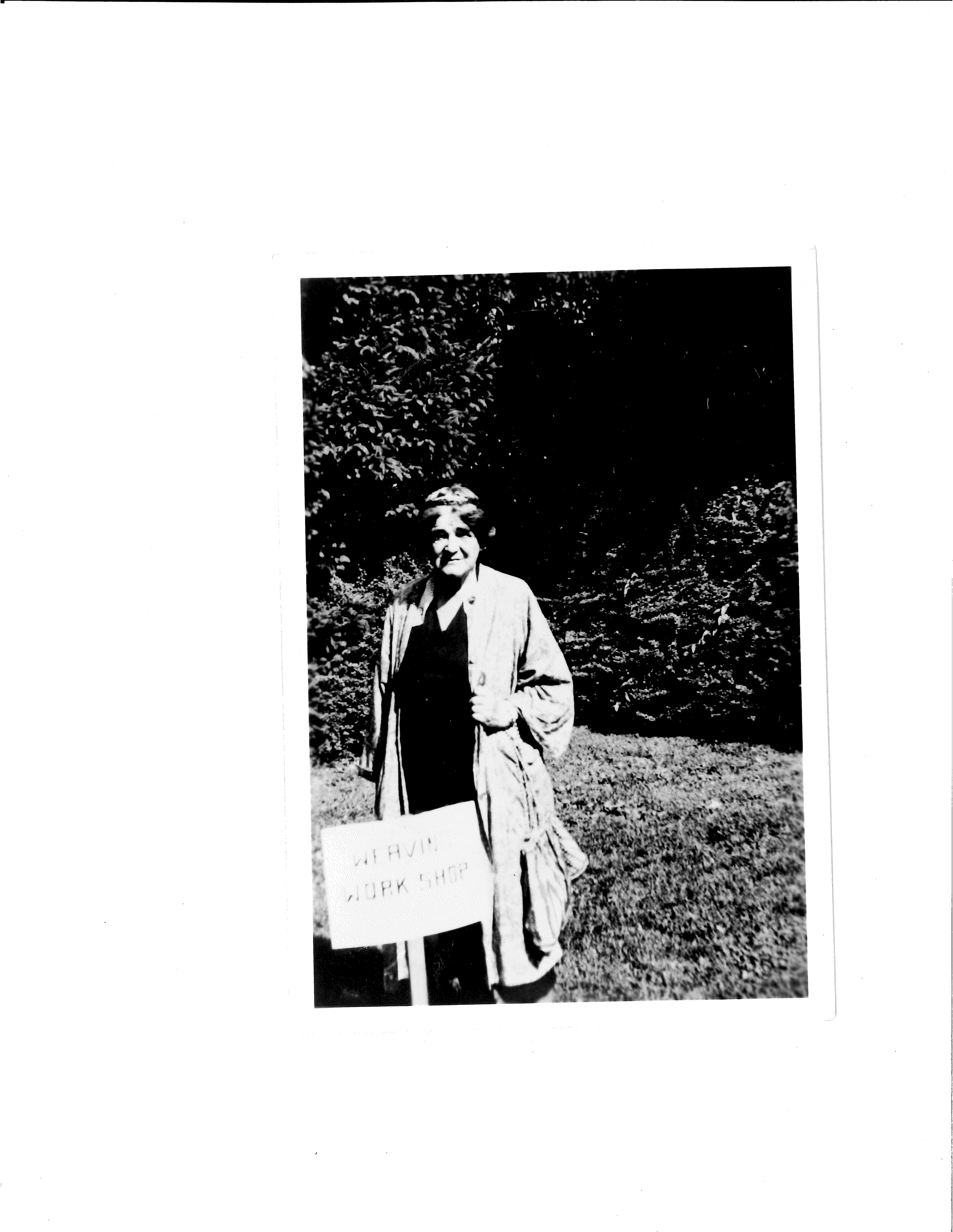History
The Mary Meigs Atwater Weaver’s Guild of Utah (MMAWG), organized in February 1956, has the great privilege of being named after Mary Meigs Atwater, one of the most important names in the history of American handweaving.
Before Mary Meigs Atwater ever saw a loom, she was a trained artist and designer, skilled in drafting and interested in all sorts of mathematical puzzles. From her childhood she was also interested in writing and had written technical articles as well as a good many short stories. She was skilled in many handicrafts: embroidery, knitting, sewing, and braiding. She knew a good deal about the various types of fabric, materials and their uses. She had lived in Paris as an art student, in Bolivia and Mexico with her husband Max, and was acquainted with the art and textile museums in Boston, New York, Chicago, and Philadelphia. She also had an enthusiastically enquiring mind and a willingness to undertake tedious research.
Mary Atwater started weaving in 1916, in Basin, Montana, where her husband was operating a mine. The world was suffering its first World War, and the women of the little mining town, whose men were working double shifts, needed something to occupy their time and provide additional income. Mary had read about Berea, in Kentucky, and she decided that a cottage industry was the answer, and that weaving—then considered a lost art in the United States except by the mountain women of Appalachia— should be the industry. She brought to Basin a teacher from the West Coast, a man who knew only simple four-harness overshot, but it was enough, and the Shuttle-Craft Guild was born.
In 1916 the U.S. Government issued a call for people skilled in crafts to work in the army hospitals with wounded veterans. It was the beginning of the practice of Occupational Therapy in the United States, and Mary answered the call. She became one of the first Occupational Therapists in this country and worked at Fort Lewis and at the Presidio in San Francisco. To bedridden patients she taught macrame, card-weaving, braiding, and other non-loom crafts. To ambulatory patients she taught hand weaving on looms made to government order—all two- or four-harness counterbalance floor looms named the Weaver’s Friend and manufactured by Reed Co. of Springfield.
At this time, she formed her ideas of what a loom should be and do—ideas that later resulted in the wonderful versatility and selection now available to the modern weaver. At this time, she also published her first pamphlet on weaving—the Shutt1e-Craft Instructions for Egyptian Card Weaving—for use in the hospitals.
Her husband, Max, died of encephalitis in 1919, and she was discharged from the army. She found herself with two children to support and educate, and very little financial security. She had no degree from any school that vouched for her ability to do anything. Her army experience gained her a job working as an Occupational Therapist with the patients of several psychiatrists in Seattle, and she spent her spare time in researching weaving, writing several articles that were published in national magazines. At that time, perhaps as a reaction to World War I, there was an intense interest in handicraft, much like the revival we are seeing today, and these articles aroused a lot of interest and response. Soon she was spending more and more time answering letters from aspiring weavers. At this point she gave up the practice of Occupational Therapy, and in 1922 she started out as a teacher of weaving by correspondence. She issued a course of instruction and began to publish the Shutt1e-Craft Bulletin as a monthly newsletter for her students.
In 1923, the family moved to Cambridge, Massachusetts, where her son Monty was going to college, and where museums and libraries were available for research. During the five years in Cambridge, she researched and published the John Landes Book of Patterns, and she wrote and published the Shuttle-Craft Book of American Hand Weaving as a text for her correspondence course. She later revised this course; taught many private students; wrote pamphlets and articles for loom and yarn companies as well as for national magazines; wrote, published, and mailed the Shuttle-Craft Bulletin every month; lectured occasionally; and spent two summers setting up weaving shops for the Occupational Therapy departments of the New York State Hospitals for the Insane. She also started compiling the Recipe Book of Patterns for Hand Weavers.
Mary continued to write, publish, and teach until her retirement in 1946, when she turned over the Shuttle-Craft Guild, the Course in Handweaving, and the Bulletin to Harriet Tidball.
Mary’s idea of retirement was to continue teaching private students; to start a series of weaving institutes at various places in the United States and Canada; to step up her research, especially in the pick-up weaves native to the Indians of North and South America; to visit Guatemala and write a book about the weaving there; and to continue to write articles on weaving and related textile crafts. After her move to Salt Lake City in 1948, she finished writing Byways in Handweaving, which was published in 1954 when she was 76 years old. This book is a discussion of weaves not requiring a large loom, such as inkle weaving, card weaving, plaiting, braiding, etc., many derived from primitive sources. After Byways was published, she started work on the revised edition of the Recipe Book, which she turned over to the Mary Meigs Atwater Weaver’s Guild. The Guild published the book after her death.
 Mary Meigs Atwater Weavers Guild
Mary Meigs Atwater Weavers Guild 
